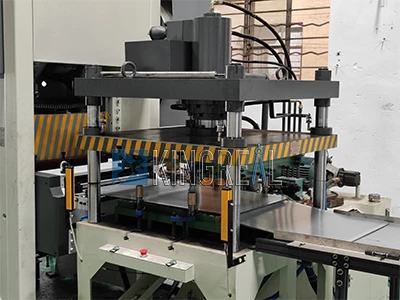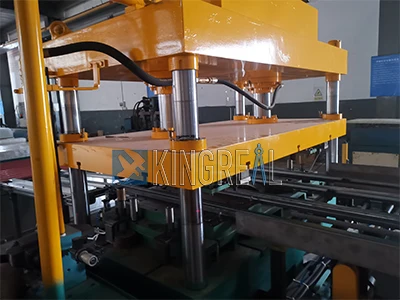What is trapped oil in a hydraulic machine? What are the effects of trapped oil in hydraulic machines?
Time:2021-03-18
Views:3057


Oil trapping in a four-column hydraulic machine is a relatively common phenomenon. Oil trapping refers to the phenomenon that the pressure of the hydraulic machine changes drastically when the volume occupied by the oil is changed when the hydraulic machine is closed. This phenomenon will cause pressure shock and cavitation, which will seriously affect the hydraulic pump. How to deal with the oil trapping phenomenon of the four-column hydraulic press? There are many ways to deal with the four-column hydraulic machine to eliminate trapped oil. Because of the different causes of the problem, the treatment methods are also different. Next, the editor of Tengzhou Zhongyou Heavy Industry Hydraulic Press Manufacturer will come to answer for you.
1. In the double-effect vane pump, since the included angle of the arc part of the stator> the interval included angle of the oil distribution window> the included angle of the two vanes, there is a dead volume between the suction and pressure distribution windows, but the volume The size does not change, so there will be no oil trapping. However, because the arc curve on the stator and its center angle cannot be made very accurate, it may still show a slight oil trapping phenomenon. In order to overcome the hazard of this trapping phenomenon, the four-column hydraulic machine often opens a triangular cross-section triangular groove at the front end of the oil pressure window of the oil distribution plate to reduce the sudden pressure change in the oil cavity and reduce the pulsation and noise of the output pressure.
2. During the meshing process of the external gear pump, in order to make the four-column hydraulic gear pump work smoothly and continuously suck and press oil, the coincidence degree ε of the gears must be greater than 1, that is, before the first pair of gear teeth are disengaged, The rear pair of gear teeth have entered meshing. When two pairs of gear teeth mesh together, a closed volume is formed between them. Following the rotation of the gear, this dead volume first changes from large to small, and then from small to large. Therefore, the gear pump is trapped in oil. In order to eliminate this kind of oil trapping, unloading grooves are often opened on the front and rear cover plates or floating shaft sleeves (floating side plates) of the pump to limit the closed dead volume to a minimum, and the volume changes from large to small to communicate with the pressure oil chamber. When the volume changes from small to large, it is connected to the oil suction cavity.
3. The small closing volume of the four-column hydraulic press will cause the trapped oil to be squeezed and cause the pressure to rise sharply, and it will be squeezed out from the gap, causing the oil to heat up, and the bearings and other parts are also subject to additional unbalanced loads. , The enlargement of the closed melting chamber will form a partial vacuum, which will separate the gas dissolved in the oil and cause cavitation, which is the oil trapping phenomenon of the gear pump. The way to eliminate the oil trapping of the four-column hydraulic machine is generally to open a pair of rectangular unloading grooves on the cover plates at both ends. The principle of unloading grooves is to make the unloading groove communicate with the high-pressure chamber to remove the closed volume of oil when the closed volume is reduced. The liquid is discharged to the pressure oil chamber, and when the closed volume increases, the unloading groove is communicated with the oil suction chamber, so that the oil in the oil suction chamber is filled to avoid vacuum, so that the oil trapping phenomenon can be eliminated.














